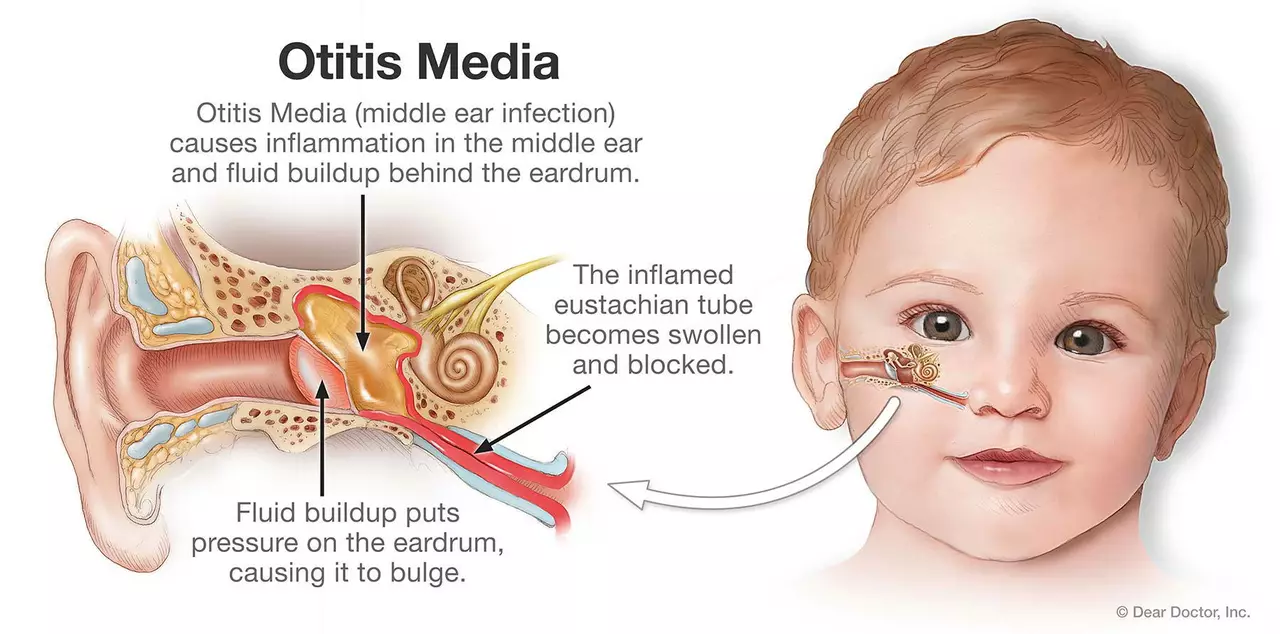Otitis media is a middle ear infection that fills the space behind the eardrum with fluid and sometimes pus. It’s one of the most common reasons parents visit a doctor, and it also affects many adults after a cold or allergy flare. The good news: most cases improve with simple care. The focus below is on clear, practical steps you can use right away.
Common signs include sharp or dull ear pain (often worse when lying down), a feeling of pressure or fullness in the ear, muffled hearing, fever, and sometimes fluid draining from the ear. Babies may pull at their ear, cry more, feed poorly, or have trouble sleeping.
See a healthcare provider quickly if you notice: very high fever (over 39°C/102°F), severe nonstop pain, pus or bloody drainage from the ear, sudden hearing loss, symptoms that last more than 48–72 hours, or signs of illness in babies under 6 months. For infants and very young children, it’s best not to wait—get medical advice right away.
Treatment depends on age, severity, and whether the infection looks bacterial or viral. Many mild cases, especially in older children and adults, improve within a few days without antibiotics. Doctors may recommend a short “watchful waiting” period (48–72 hours) for mild symptoms. When antibiotics are needed—commonly for very young children, severe symptoms, or clear bacterial infection—prescribed oral antibiotics speed recovery.
Home care that helps: give acetaminophen or ibuprofen for pain and fever (follow dosing guides; don’t give aspirin to children), use a warm compress over the ear for comfort, keep the head elevated during sleep, and avoid getting water into the ear if there’s drainage. If a perforated eardrum is suspected, avoid cotton swabs and inserting anything into the ear canal.
To reduce future episodes: keep up-to-date with vaccines (flu and pneumococcal vaccines lower risk), avoid tobacco smoke exposure, encourage breastfeeding for infants when possible, practice good hand hygiene to cut viral spread, and limit prolonged pacifier use after 6 months. Kids with frequent recurrences may be referred to an ENT specialist—sometimes small ear tubes (tympanostomy) are recommended to drain fluid and prevent hearing problems.
Complications are uncommon but can include persistent hearing reduction, speech delays in young children, or spread of infection if not treated. If you’re unsure whether symptoms need a prescription or just home care, call a healthcare provider—fast advice prevents problems and keeps hearing and development on track.

As a copywriter, I've been researching the connection between azelastine and otitis media. From what I've gathered, azelastine is a medication commonly used to treat allergies, but it has also shown potential in addressing the symptoms of otitis media, a common ear infection. Studies have suggested that azelastine's anti-inflammatory and antihistamine properties may help reduce the swelling and congestion caused by otitis media. However, more research is needed to fully understand the effectiveness and safety of using azelastine to treat this condition. In the meantime, it's important to consult with a healthcare professional for the best treatment options for otitis media.
More